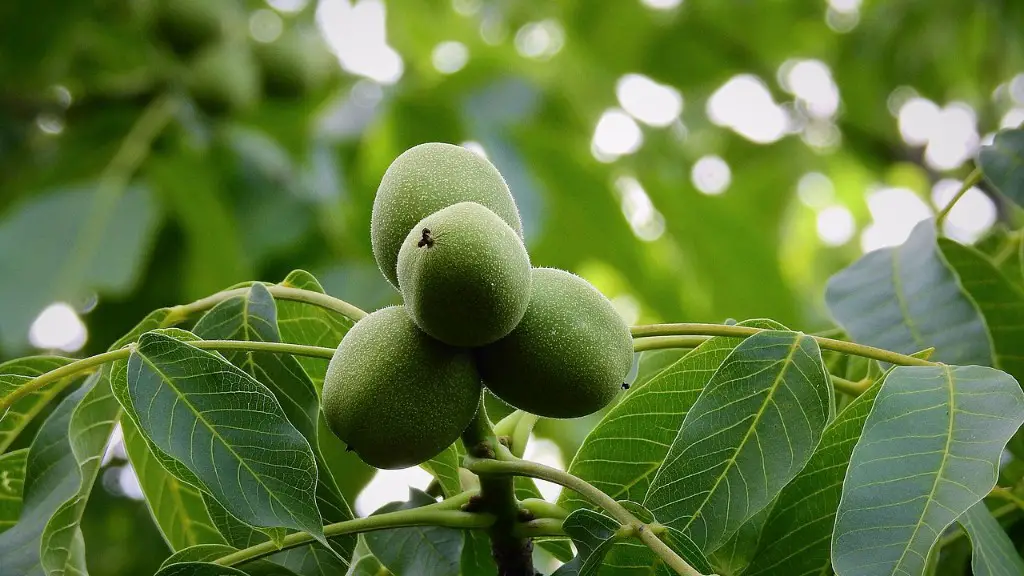Every gardener knows the struggle of waiting patiently for that avocado tree to show its full potential and produce as much fruit as promised. Unfortunately, more often than not, an avocado tree growing in a home garden will fail to bear any fruit whatsoever. So what could be causing this lack of productivity? This informative article will provide background information, data from relevant studies and the perspective of gardening experts, as well as an in-depth look at why your avocado tree might not be producing any fruit at all.
It is important to remember that avocado trees are self-incompatible, meaning that they need another tree of a different genetic type in order to produce fruit. This is called cross-pollination, and it is the only way that an avocado tree can set fruit and allow it to ripen. If the tree has not been properly pollinated or the pollen source tree is not close enough, an avocado tree will struggle to produce any fruit.
Environmental conditions also have an impact on whether or not an avocado tree will bear fruit. For example, avocado trees will not produce fruit if it is too hot or too cold in their location, or if the soil is too sandy or rocky. Other issues can also prevent an avocado tree from bearing fruit, such as pest damage, nutrient deficiencies, and a lack of proper care. All of these factors can contribute to limited production, or worse, no production at all.
Fortunately, there are some steps that can be taken by the gardener to help increase the chances of the avocado tree producing fruit. First, the tree should be properly pruned, as this will help to encourage flowering and fruit production. Also, planting a pollinator tree nearby will ensure that sufficient pollination takes place. Finally, making sure that the avocado tree is receiving the proper nutrients and care will give it the best chance of producing fruit.
Horticulture professionals also emphasise the importance of selecting the right variety of avocado tree. Some varieties, such as ‘Hass’, are known for their high productivity, while other varieties such as ‘Fuerte’ produce a low number of fruit. Selecting the right variety for your region and climate will help ensure a bountiful harvest.
In addition to these steps, it is crucial to be patient when it comes to the growth and development of an avocado tree. Most avocado trees take 3-5 years from the moment of planting in order to begin producing fruit, and it can take many more years for a tree to reach its peak production level. As long as suitable environmental conditions, nutrients and care are provided, the tree will eventually bear fruit.
Pest Management for Avocado Trees
In addition to environmental conditions, another important factor that can influence an avocado tree’s ability to bear fruit is pests and diseases. Avocado trees are susceptible to a variety of pests and diseases that can severely affect the health of the tree and reduce the amount of fruit production. Common pests such as mites, aphids, and scale insects can damage the leaves, sap sugars, and stunt the growth of the avocado tree, which can in turn reduce the amount of flowers and fruit produced.
Fortunately, there are a variety of steps that can be taken to prevent and control pest infestations. Applying an insecticidal soap to the leaves or a micronised sulphur powder spray will help to control most common pests. For more serious infestations, the use of Neem oil or insecticidal sprays containing pyrethrin or Spinosad are usually effective.
It is also important to inspect the tree regularly for signs of disease as this can reduce the ability of the apple tree to produce fruit. Common diseases such as root rot, fungal blights and anthracnose can all be devastating to an avocado tree. Trees affected by these diseases can show signs such as wilting of the leaves, spotting, and discolouration. Applying a fungicide to affected areas and removing any infected plant debris can help to reduce the spread of disease and protect the tree.
Disease Prevention for Avocado Trees
For avocado trees to produce a healthy crop, they must be monitored and cared for properly. It is important to provide regular irrigation to ensure that the tree is well-hydrated, as this will help to reduce the risk of diseases. Mulching between the tree’s roots and trunk can also help to retain moisture and prevent weeds from flourishing. Applying a balanced fertiliser is also recommended to help provide the necessary nutrients for the tree to thrive and set fruit.
Inspecting the tree regularly for pests and diseases will also help to reduce the risk of infestations. As a general rule, always remove any diseased leaves or fruits immediately to prevent the spread of disease. Additionally, it is important to clean up any fallen leaves or debris regularly as this can harbour pests and diseases and should be avoided.
Avocado trees should also be given adequate space to ensure that they are able to receive enough sunlight and air circulation. Crowding avocado trees as they will struggle to receive enough sunlight, air circulation and nutrients, resulting in weak and unhealthy foliage, and potentially no fruit.
Harvesting Avocado Fruit
Knowing when to harvest can be a tricky thing for anyone, especially for those with an avocado tree. Fortunately, there are some signs that can indicate when the fruit is ready to be picked. First, the colour of the fruit will change from dark green to a light green with a slightly yellow hue. Secondly, the fruit should be firm when touched, but with a bit of give to the touch. Also, the fruit should easily detach from the tree when gently tugged. Avocado fruits can be picked when they reach this stage and stored in a cool and dark place until they are ready to be eaten.
For those looking to harvest the fruits of their labour, it is important to remember that a healthy avocado tree will require both patience and proper care in order to produce a bountiful crop. And while it is possible for an avocado tree to set and ripen fruit in a home garden, it is not always guaranteed as there are a number of factors that can affect the productivity of an avocado tree. Fortunately, there are a variety of steps that can be taken to increase the chances of a tree bearing fruit, and with patience and effort the fruits of the gardener’s labour should eventually be rewarded.
Fruit Storage for Avocado Trees
After harvesting, it is important to store the avocado fruits properly in order to avoid spoilage and wastage. Unripe fruits can be stored in a paper bag along with a ripe apple or banana in order to speed up the ripening process. Once ripe, the fruits should be stored in a cool, dark place for maximum shelf life. Fruits should be checked regularly as avocados that are exposed to air will start to go bad quickly.
It is also important to avoid freezing or microwaving avocados as this will destroy their taste and texture. Freezing may also cause the fruit to become mushy and difficult to peel. To ensure that the fruits remain fresh and ripe, they should be used as quickly as possible or stored in an airtight container in the refrigerator.
Avocado trees can be a delight to have in the garden and can provide a bounty of fresh fruit that can be enjoyed. However, to ensure that a tree produces a plentiful harvest, it is important that sufficient pollination takes place, optimal environmental conditions are provided and the tree is given proper care and attention. Following these steps and with a little patience, the gardener should eventually be rewarded with the fruits of their labour.
Pruning Avocado Trees
Pruning is an important part of caring for an avocado tree as it helps to promote healthy growth, encourages fruit production and keeps the tree at a manageable size. The tree should be pruned in the dormant season when there are no signs of growth. Pruning should aim to create a symmetrical shape with an even canopy and maintain the form of the tree. This will help to ensure that the leaves receive the necessary sunlight and air circulation to promote healthy growth.
When pruning an avocado tree, it is important to use sharp, clean pruning shears to maintain the tree’s optimal shape. Any dead or diseased branches should be removed and pruning should be done to a minimum in order to preserve as much of the tree’s structure as possible. Additionally, pruning sessions should be spaced out to ensure that the tree has enough time to heal in between prunes.
Pruning an avocado tree can be an arduous task, but with patience and the correct tools and techniques, a gardener can achieve successful pruning and enjoy a well-managed and productive tree for years to come.
Fertilising Avocado Trees
Fertilising an avocado tree is an important part of caring for it. By providing the tree with the necessary nutrients, it will be able to reach its maximum growth potential and produce a healthy crop of fruit. It is important to select a fertiliser that is specifically formulated for avocado trees, as this will contain the correct balance of essential nutrients for healthy growth.
When applying the fertiliser, it is important to thoroughly water the soil around the tree before application. This will help to get the nutrients down to where the tree’s roots can access them. A balanced mix of nitrogen, phosphorous and potassium should be used for optimal growth and fruit production. Additionally, an organic mulch should be applied around the tree to help with moisture retainment and weed control.
Fertiliser should be applied on a monthly basis during the tree’s active growing season. It is important to avoid over-fertilising, as this can cause the tree’s roots to become burned or damaged, resulting in stunted growth or even death. With the proper fertiliser and techniques, a gardener can ensure that their tree receives the necessary nutrition for a bountiful harvest.


